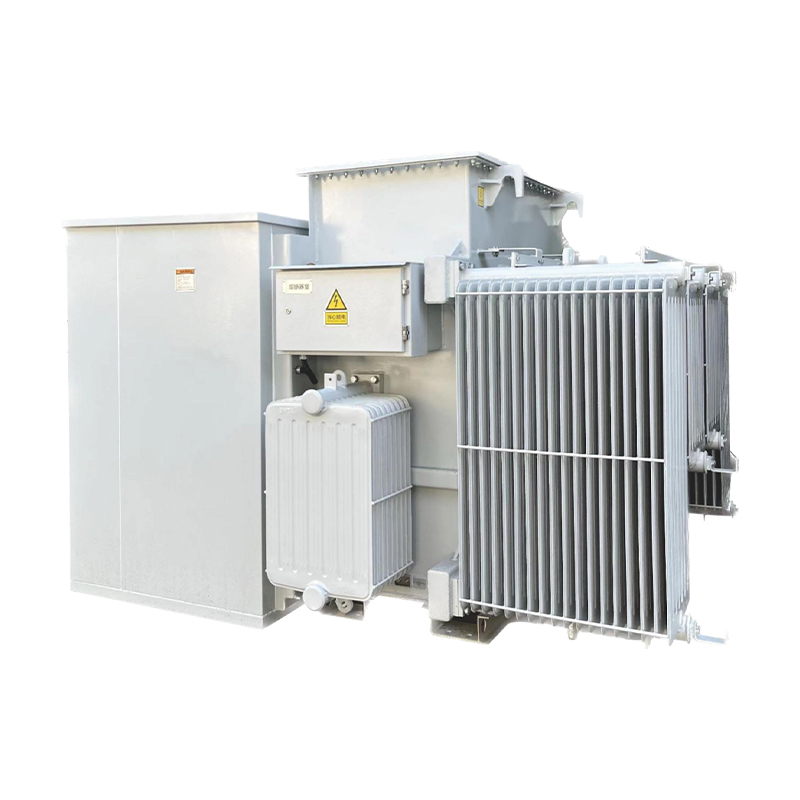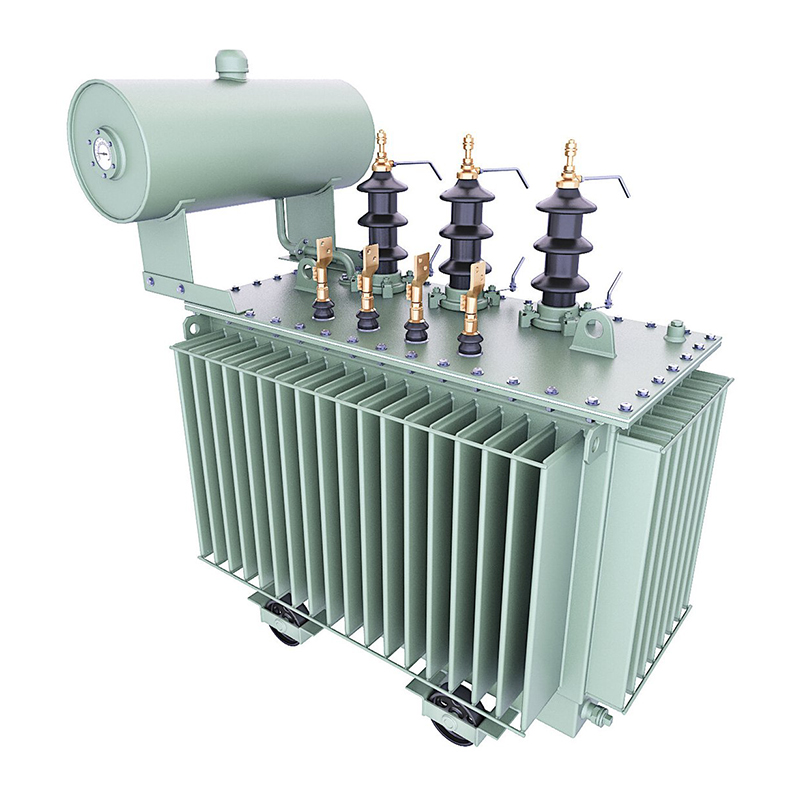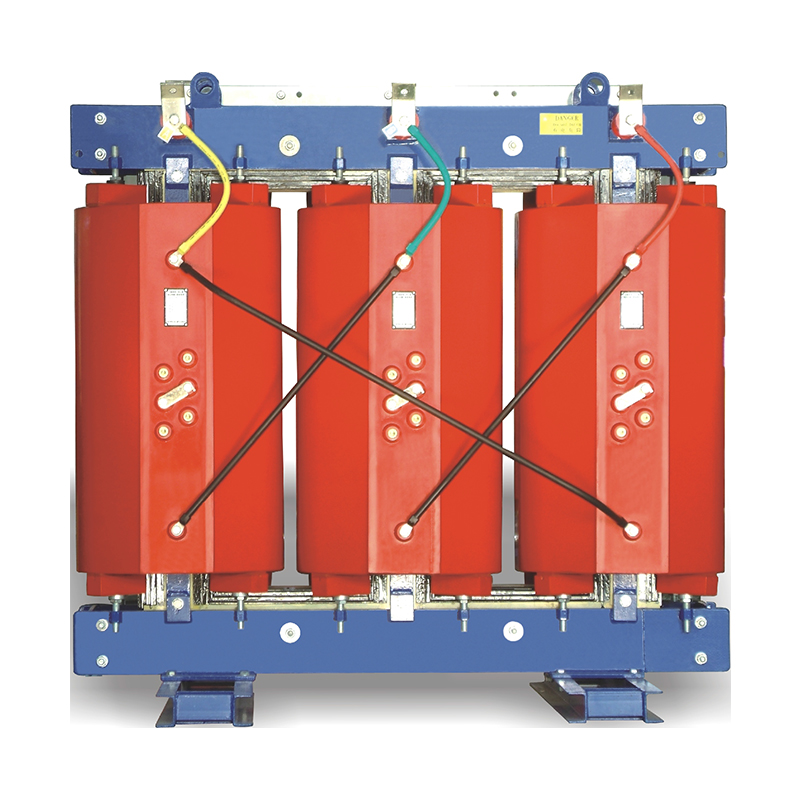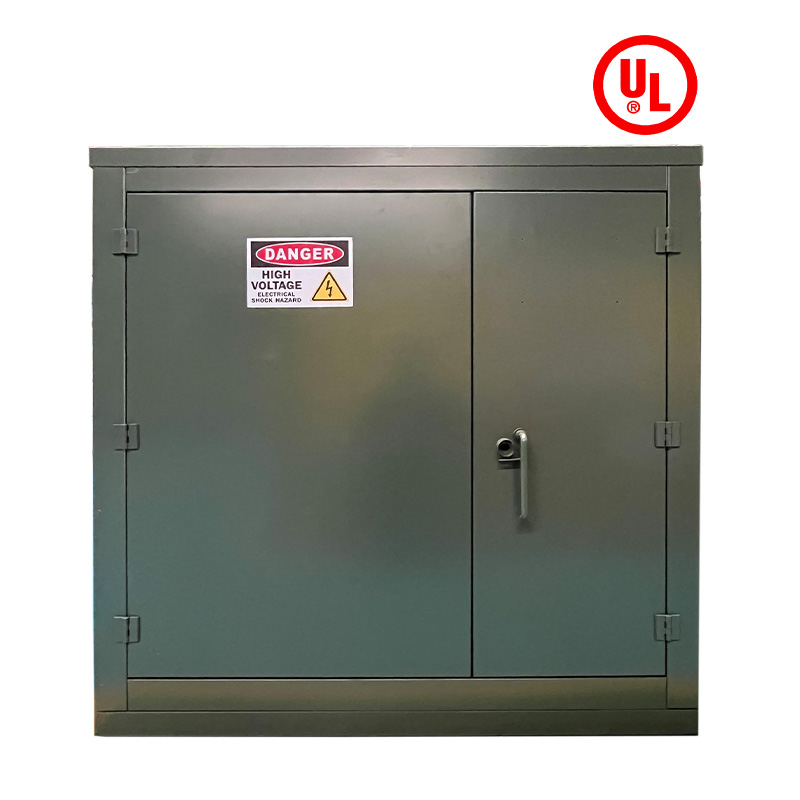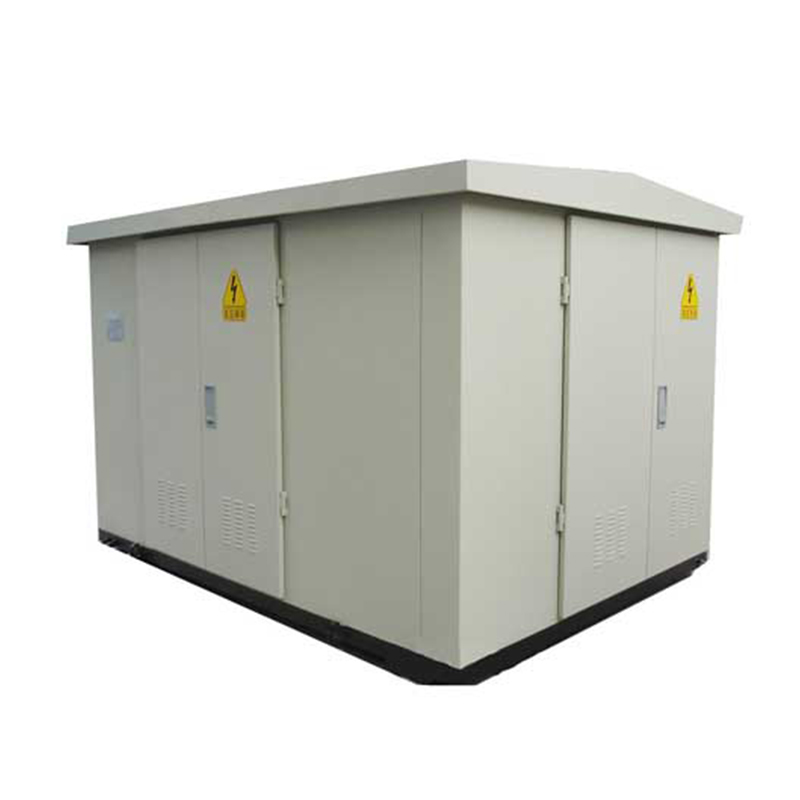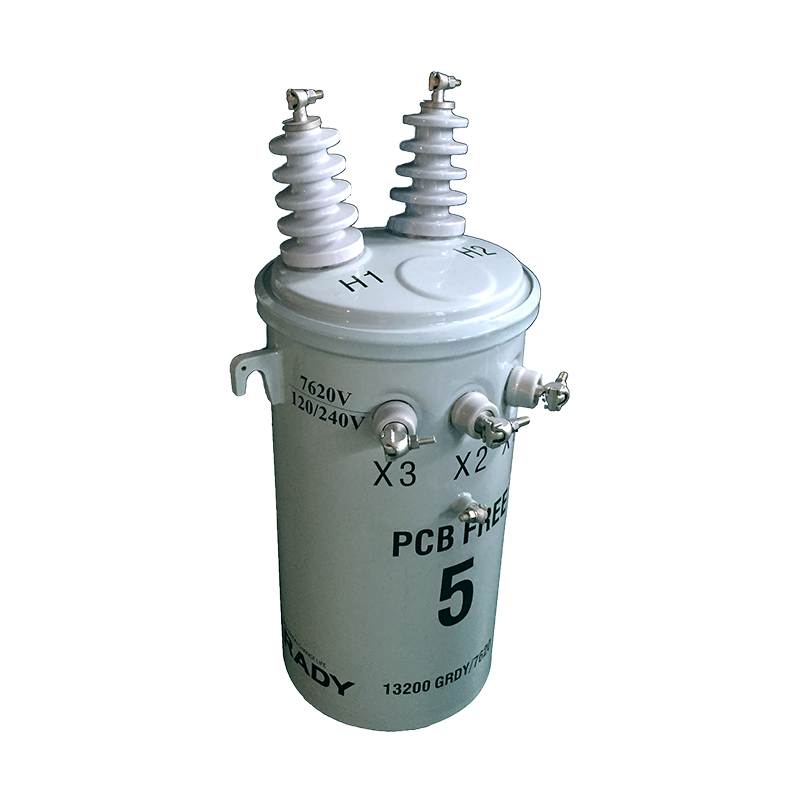Architecture Design of IoT-Based Monitoring System for Power Transformers
Reliability and Stability: The system must operate stably in harsh field conditions, including extreme temperatures (-40°C to 70°C), high humidity (up to 95% RH), strong electromagnetic interference (EMI), and voltage fluctuations. Key components (such as sensors and communication modules) should meet industrial-grade standards (e.g., IEC 61850 for power system automation) to ensure continuous data collection and transmission without interruption.
Real-Time Performance: For critical parameters such as partial discharge and sudden temperature rise, the system must achieve millisecond-level data collection and second-level data transmission to ensure timely detection of abnormal conditions. The end-to-end data latency (from sensor to application layer) should be controlled within 5 seconds to support real-time fault warning.
Scalability: The system should support flexible expansion of monitoring points and functional modules. For example, when adding new transformers to the monitoring network, the system can automatically identify and access new devices without large-scale modifications to the existing architecture. Additionally, the platform layer should support the integration of new data analytics algorithms (e.g., AI-based fault diagnosis models) to adapt to evolving business needs.
Interoperability and Compatibility: The system should comply with international communication protocols and data standards to ensure compatibility with existing power grid automation systems (e.g., SCADA, EMS) and third-party devices. For example, the network layer should support protocols such as MQTT (Message Queuing Telemetry Transport) for IoT devices and IEC 61850-8-1 for power system communication, enabling seamless data exchange between different systems.
Cost-Effectiveness: The system design should balance performance and cost. On the one hand, it should adopt mature and cost-effective technologies (e.g., low-power wide-area network (LPWAN) for long-distance communication) to reduce deployment costs; on the other hand, it should avoid over-engineering and ensure that the system meets actual monitoring needs without unnecessary functional redundancy.
Multi-Parameter Real-Time Monitoring: Collect key operational parameters of transformers, including:
Electrical Parameters: Three-phase voltage, three-phase current, power factor, load rate, and tap-changer position.
Thermal Parameters: Top oil temperature, bottom oil temperature, winding temperature (direct or indirect measurement), and ambient temperature.
Oil Quality Parameters: Oil moisture content, acid value, dielectric loss tangent (tanδ), and dissolved gas concentration (H₂, CH₄, C₂H₂, etc.).
Mechanical and Physical Parameters: Tank vibration (amplitude and frequency), oil level, pressure relief valve status, and tank leakage.
Fault Early Warning and Diagnosis: Based on real-time data and historical trends, identify abnormal conditions (e.g., abnormal temperature rise, increased partial discharge) and issue early warnings. Use AI algorithms (e.g., neural networks, support vector machines) to diagnose the type, location, and severity of faults (e.g., winding short circuit, tap-changer failure) and provide maintenance suggestions.
Life Prediction and Health Management: Establish a transformer health index (THI) model by integrating parameters such as insulation aging degree, oil quality degradation, and mechanical wear. Predict the remaining useful life (RUL) of the transformer to support scheduled maintenance planning.
Remote Control and Operation: Enable remote control of non-critical operations, such as adjusting the tap-changer position (with permission) and activating the cooling system, to reduce on-site operation frequency.
Data Visualization and Reporting: Provide a user-friendly interface (e.g., web-based dashboard, mobile app) to display real-time data, historical trends, and fault information in the form of charts, curves, and alarms. Generate regular maintenance reports and performance analysis reports to support decision-making.
Historical Data Storage and Query: Store long-term monitoring data (typically 5–10 years) in a high-performance database to support trend analysis, fault recurrence, and system optimization. Provide fast query functions for historical data based on time, parameter type, and transformer ID.
Sensors: According to the monitoring parameters, different types of sensors are selected to meet the requirements of accuracy, stability, and environmental adaptability:
Electrical Parameter Sensors: Use Hall-effect current sensors and voltage sensors (accuracy class: 0.2S) to measure three-phase current and voltage. These sensors are non-intrusive, avoiding the need to disconnect the transformer's primary circuit during installation. For tap-changer position monitoring, a rotary encoder (resolution: 1°) is installed to collect the tap position in real time.
Thermal Parameter Sensors: Adopt fiber optic temperature sensors (FOTS) for winding temperature measurement (measurement range: -50°C to 300°C, accuracy: ±0.5°C) because they are immune to electromagnetic interference and suitable for high-voltage environments. For oil temperature measurement, use platinum resistance temperature detectors (Pt100, accuracy class: A) installed at the top and bottom of the oil tank.
Oil Quality Sensors: Integrate online oil moisture sensors (measurement range: 0–100 ppm, accuracy: ±5 ppm) and dissolved gas sensors (e.g., electrochemical sensors for H₂, CH₄, C₂H₂, detection limit: ≤1 μL/L) to monitor oil quality in real time. Some advanced systems also use dielectric loss sensors to measure tanδ of the oil (measurement range: 0–0.1, accuracy: ±0.001).
Mechanical/Physical Parameter Sensors: Install piezoelectric vibration sensors (measurement range: 0–500 Hz, sensitivity: 100 mV/g) on the tank surface to collect vibration signals. For oil level monitoring, use capacitive oil level sensors (measurement range: 0–100% of tank height, accuracy: ±1%) to detect oil level changes and prevent oil leakage.
Intelligent Data Acquisition Terminals (IDAT): Each transformer is equipped with an IDAT, which serves as the "local controller" of the perception layer. The IDAT is responsible for:
Collecting data from multiple sensors (sampling frequency: 1–10 Hz for general parameters, 100–1000 Hz for high-frequency parameters such as partial discharge).
Preprocessing data (e.g., filtering out noise, calibrating sensor errors, and converting analog signals to digital signals).
Storing local data (using a 4GB–16GB SD card) to prevent data loss due to temporary network disconnections.
Communicating with the network layer (supporting wired and wireless communication modules) to transmit data.
Low-Power Design: For transformers in remote areas (e.g., rural power grids) where power supply is difficult, the perception layer adopts low-power technologies to extend the service life of battery-powered devices. For example, sensors and IDATs use sleep-wake cycles (wake up every 5–15 minutes to collect data, then enter sleep mode) to reduce power consumption. The average power consumption of the IDAT is controlled within 50 mW.
Safety Isolation: Sensors installed in high-voltage areas (e.g., winding temperature sensors) must meet high-voltage insulation requirements (insulation level: ≥220 kV for 220 kV transformers) to avoid insulation breakdown.
Anti-Interference Measures: The perception layer is susceptible to electromagnetic interference from the transformer's magnetic field. Therefore, shielded cables (e.g., copper mesh-shielded cables) are used for sensor wiring, and grounding measures (grounding resistance ≤4 Ω) are implemented to reduce interference.
Easy Maintenance: Sensors should be installed in easily accessible locations (e.g., the side of the oil tank instead of the top) to facilitate replacement and calibration. The IDAT is usually installed in a waterproof and dustproof junction box (protection class: IP65) to adapt to outdoor environments.
Wireless Communication Technologies:
Low-Power Wide-Area Network (LPWAN): Suitable for long-distance, low-data-rate transmission (e.g., transmitting temperature and oil level data every 5–15 minutes). Common LPWAN technologies include LoRaWAN (transmission distance: 1–10 km in open areas, data rate: 0.3–50 kbps) and NB-IoT (narrowband IoT, supported by mainstream telecom operators, transmission distance: 2–5 km in urban areas, data rate: 0.1–250 kbps). LPWAN is widely used in rural and remote areas due to its low power consumption and wide coverage.
5G/4G Cellular Communication: Suitable for high-data-rate transmission (e.g., transmitting partial discharge waveforms and vibration signals). 5G provides ultra-low latency (≤1 ms) and high bandwidth (≥100 Mbps), making it ideal for real-time monitoring of critical parameters. 4G is used as a backup for 5G in areas with incomplete 5G coverage.
Wireless Local Area Network (WLAN): Suitable for transformers in substations with wired network access. WLAN (e.g., Wi-Fi 6, IEEE 802.11ax) provides high data rates (up to 9.6 Gbps) and low latency, enabling fast transmission of large-volume data (e.g., oil quality analysis reports).
Wired Communication Technologies:
Ethernet: Used for transformers in substations with stable power supply and network infrastructure. Gigabit Ethernet (1000BASE-T) is adopted to transmit data with high bandwidth requirements (e.g., video surveillance of the transformer site).
Power Line Communication (PLC): Utilizes the existing power cables of the transformer to transmit data, avoiding the need for additional wiring. PLC is suitable for indoor transformers or substations with dense cable layouts, but its transmission performance is affected by power line noise.
Communication Protocols:
MQTT (Message Queuing Telemetry Transport): A lightweight publish-subscribe protocol widely used in IoT systems. It has the advantages of small data packets, low bandwidth occupancy, and support for unreliable networks, making it suitable for data transmission between the perception layer and the platform layer.
IEC 61850: The international standard for power system automation and communication. It defines the data model and communication services for power equipment, enabling seamless integration of the IoT monitoring system with the substation's SCADA system.
CoAP (Constrained Application Protocol): Designed for resource-constrained devices (e.g., low-power sensors). It uses a request-response model similar to HTTP but with smaller packet sizes, suitable for LPWAN-based communication.
Terminal Nodes: Include sensors and IDATs, which connect to access nodes via wireless (LoRaWAN/NB-IoT/5G) or wired (Ethernet/PLC) links.
Access Nodes: Deployed in substations or near transformers, responsible for aggregating data from multiple terminal nodes and forwarding it to core nodes. Access nodes are usually equipped with multiple communication modules (e.g., LoRaWAN, NB-IoT, 5G) to support hybrid communication.
Core Nodes: Located in the power grid's regional control centers, consisting of high-performance switches and routers. They form a backbone network to transmit data from access nodes to the platform layer, ensuring high bandwidth and low latency.
Data Acquisition Module:
Receives data from the network layer through standardized interfaces (e.g., MQTT brokers, IEC 61850 clients) and supports concurrent access of thousands of terminal devices.
Performs initial data validation (e.g., checking data format, range, and completeness) and discards invalid data (e.g., data exceeding the sensor's measurement range) to ensure data quality.
Data Storage Module:
Uses a hybrid database architecture to store different types of data:
Time-Series Database (TSDB): Such as InfluxDB or Prometheus, used to store real-time monitoring data (e.g., temperature, current) with high write and query performance. TSDB supports fast retrieval of time-series data (e.g., querying the temperature trend of a transformer in the past 24 hours).
Relational Database (RDBMS): Such as MySQL or PostgreSQL, used to store static data (e.g., transformer basic information: model, rated capacity, installation location) and configuration data (e.g., sensor calibration parameters, alarm thresholds).
File Storage System: Such as Hadoop Distributed File System (HDFS), used to store large-volume unstructured data (e.g., partial discharge waveforms, vibration spectra, and maintenance records).
Implements data backup and disaster recovery (e.g., daily incremental backup and weekly full backup) to prevent data loss due to hardware failures or natural disasters.
Relatenews
- Architecture Design of IoT-Based Monitoring System for Power Transformers 2025-09-05 15:27:00
- Judgment Standards and Oil Change Process for Power Transformer Oil Deterioration 2025-09-05 15:23:00
- Design and Mechanical Strength Verification of Short-Circuit Withstand Capability for Power Transformers 2025-09-05 15:19:00
- The Role of Power Transformers in Voltage Regulation within Power Systems 2025-08-25 08:14:00
- Environmental Regulations and Technical Measures for Power Transformer Noise Control 2025-08-25 08:12:00
- The Application of Big Data Analytics in Power Transformer Fault Prediction 2025-08-25 08:11:00
- Impact of Distributed Generation Integration on Load Characteristics of Power Transformers 2025-08-16 09:43:00
- Conditions and Protection Coordination Strategies for Parallel Operation of Power Transformers 2025-08-16 09:42:00





